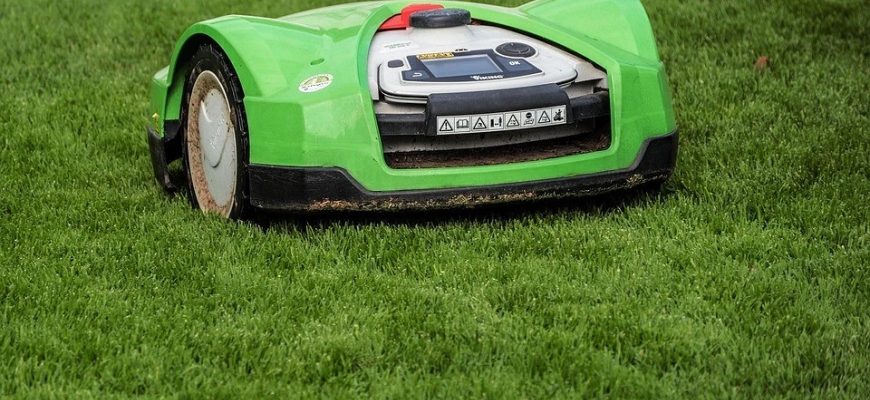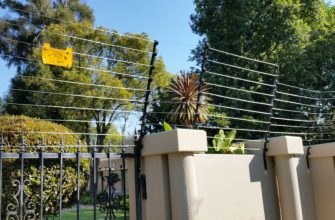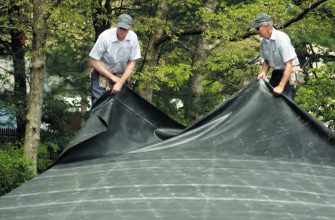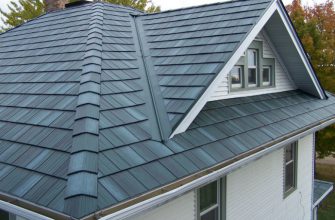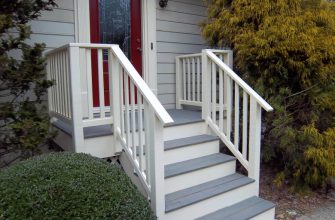A lush, green lawn can greatly enhance the curb appeal and value of any home. However, achieving and maintaining a beautiful landscape requires knowledge, effort, and commitment. From understanding your grass type’s specific needs to mastering essential care techniques, proper lawn maintenance ensures your yard thrives through every season.
This comprehensive guide provides expert tips to get your lawn in peak condition. We’ll explore the benefits of proactive care, evaluate climate considerations, outline seasonal priorities, and offer sustainable solutions. Equipped with key learnings, you can implement a tailored lawn care plan to nurture the grass to its fullest potential.
- Importance of Lawn Maintenance
- Benefits of a Well-Maintained Lawn
- Understanding Your Lawn’s Needs
- Grass Types and Climate Considerations
- Soil Analysis and Nutrient Requirements
- Identifying Common Lawn Issues
- Essential Lawn Maintenance Practices
- Mowing Techniques and Frequency
- Watering Guidelines
- Fertilization and Weed Control
- Aeration and Dethatching
- Seasonal Lawn Care
- Spring Lawn Care Tips
- Summer Lawn Care
- Fall Lawn Preparation
- Advanced Lawn Maintenance Strategies
- Dealing with Pests and Diseases
- Implementing Sustainable Lawn Practices
- Alternative Landscaping Options
- Achieving and Maintaining a Beautiful Lawn
Importance of Lawn Maintenance
Consistent, attentive lawn care provides a wealth of positives for your yard and home. Beyond aesthetics, proper maintenance:
- Promotes lush, vigorous grass growth.
- Reduces weed and pest issues.
- Conserves water usage.
- Enhances soil health and stability.
- Improves air quality and allergens.
- Boosts curb appeal for better resale value.
Alternatively, neglecting fundamental care makes grass more prone to problems like disease, drought stress, erosion, and infestations. Get ahead of issues through timely care techniques.
Benefits of a Well-Maintained Lawn
Investing in proper lawn care yields numerous rewards:
- Curb Appeal: A lush, verdant lawn and landscape instantly boost your home’s aesthetic. The vibrant green expanse makes a great first impression on visitors.
- Improved Home Value: An attractive, impeccably maintained yard can increase a property’s resale value by up to 15 percent.
- Recreation and Relaxation: A smooth, even lawn allows for yard games and sports. The outdoor space also enables relaxing in the fresh air and sunshine.
- Safety and Accessibility: Proper mowing, edging, and debris removal keeps yards neat and navigable for people and pets.
- Allergy and Pest Control: Consistent maintenance minimizes flowering weeds, standing water, and debris where pests congregate and thrive.
- Water Conservation: Aeration and appropriate watering techniques enable better moisture absorption, reducing waste.
By dedicating time each week to fundamental care practices, you can unlock a lawn’s full potential and reap the valuable returns.
Understanding Your Lawn’s Needs
To properly nourish grass, first understand your yard’s characteristics. Soil composition, grass species, sunlight patterns, foot traffic and other factors determine optimal maintenance.
Grass Types and Climate Considerations
Choose turf grass suited for your region’s climate, soil properties, and intended use. Cool-season grasses like fescue and bluegrass thrive in northern zones with adequate rainfall and shade tolerance. Meanwhile, warm-season varieties like Bermuda and zoysia favor southern heat, sun exposure, and drought resistance.
Study seasonal changes to pinpoint peak growing periods and dormancy. Adjust mowing, watering, feeding, and other practices accordingly during growth spurts versus semi-dormant phases.
Soil Analysis and Nutrient Requirements
A soil test from your local extension office analyzes pH levels and nutrient composition. Results provide insight on your lawn’s ideal fertilization, drainage, and amendments for healthier grass.
Target a pH between 6.0-7.0. Macronutrients like nitrogen promote lush foliage and shoot growth. Meanwhile, phosphorus and potassium encourage root system development and disease resistance.
Look for fertilizers with NPK percentages that align with soil test guidance. Slow-release or organic options provide a steady nutritional supply.
Identifying Common Lawn Issues
Keep an eye out for common lawn problems like:
- Discoloration or lesions signalling disease.
- Dry, thinning turf indicating inadequate water.
- Weeds invading through cracks or bare areas.
- Mushrooms or algae suggesting poor drainage.
- Pest infestations from grubs, chinch bugs, or nematodes
Catch issues early before they escalate. Adjust maintenance practices like watering schedules to remedy the root problems.
Essential Lawn Maintenance Practices
Mastering core care techniques ensures a thriving landscape all year long. Proactively address these fundamental areas:
Mowing Techniques and Frequency
Mowing practices influence lawn health and appearance. Set blades between 3-4 inches tall, cutting no more than one-third of the total length per mow session. This avoids scalping and allows proper photosynthesis.
Increase mowing frequency in peak growing seasons, reducing intervals during dormancy. Remove no more than one-third of the grass height per cut. Alternate mowing patterns monthly to prevent ruts.
Sharpen mower blades at least once per year. Dull edges tear rather than cut cleanly, opening grass to disease.
Watering Guidelines
Grass requires about 1-1.5 inches of water weekly from rainfall or irrigation, more in hotter months. Test moisture levels with a screwdriver probe before watering again.
Water early morning before heat and evaporation escalates. Avoid frequent, light watering that only dampens surface levels. Instead, soak the top 6-8 inches of soil to encourage deeper root growth for drought tolerance.
Adjust sprinklers to prevent runoff and target lawn areas, not sidewalks. Install a smart irrigation controller to automate watering based on weather data.
Fertilization and Weed Control
Fertilize lawns in the spring and fall, avoiding midsummer applications that can burn grass. Organic compounds or slow-release synthetic fertilizers supply a steady nutritional flow without surge growth and leaching.
Spot treat weeds as soon as they appear before underlying root structures establish. Target treatments to affected areas only to avoid fertilizing weeds. Consider corn gluten as an organic pre-emergent in early spring.
Allow grass to fully dry before mowing to prevent spreading weed seeds. Maintain a thick turf through proper feeding, mowing, and care to choke out weeds.
Aeration and Dethatching
Aeration punctures small holes through turf and soil, enabling better oxygen, water, and nutrient absorption. Use a core aerator every fall, more often for high-traffic areas. Let cores break down naturally to enrich the lawn.
Thatch buildup of dead grass clippings and roots creates a blockage layer, preventing proper air and water circulation. Dethatch in early fall using a mechanical rake, power dethatcher, or topdressing method.
Remove heavy debris with rakes or lawn vacuums. Dispose of piled debris once dry to prevent reseeding weeds and pests on bare soil.
Seasonal Lawn Care
In addition to core maintenance, certain seasons call for extra lawn preparation. Tailor efforts around peak growing cycles for optimal grass health.
Spring Lawn Care Tips
The spring kickstarts lawn growth after winter dormancy. Rake debris, aerate compacted areas, overseed bare patches, and apply pre-emergent weed control. Gradually reduce watering as soil temperatures rise.
Mow regularly, removing no more than one-third grass blade length. Fertilize using organic mixes or phosphorus-heavy synthetic blends ideal for root production. Spot treat weeds as needed before they spread.
Summer Lawn Care
Hot summer months test lawn endurance under heat, drought, and heavy recreational use. Adjust mowing height up to reduce grass stress. Water deeply and infrequently to encourage deeper roots.
Let grass completely dry before mowing to prevent disease spread. Avoid excess fertilizer that can burn grass when temperatures peak. Monitor for pest and fungus issues, treating promptly to avoid rapid escalation.
Consider lawn alternatives like clover in shady or problem areas. Clover stays greener with less water and handles traffic well. Just be mindful of bees if allergic.
Fall Lawn Preparation
Cooler fall temperatures allow lawns to recover from summer strain. Core aerate for better nutrient absorption. Dethatch to remove debris buildup and allow sunlight to reach soil levels.
Overseed bare or thinning areas after aerating for better germination success. Rake gently and top dress with fresh compost to smooth uneven areas. Apply starter fertilizer to help young grass establish before winter.
Mow leaves with bag attachments before heavy leaf fall. Keep mowing until grass stops growing to prevent matting and moisture buildup.
Advanced Lawn Maintenance Strategies
Explore next-level lawn care methods to address specific needs:
Dealing with Pests and Diseases
From grubs and chinch bugs underground to fungus and lesions above, pests and diseases quickly damage turf. Identify the culprits through lawn patterns and insect ID. Then leverage organic solutions like beneficial nematodes, neem oil, corn gluten, or compost tea.
As a last resort, use selective pesticides, strictly following product instructions. Target treatments to affected zones only, retesting in 2-3 weeks if issues continue spreading.
Implementing Sustainable Lawn Practices
Reduce environmental impact through sustainable lawn care. Eliminate synthetic chemicals and transition to organic fertilization, compost top-dressing, and non-toxic pest control.
Plant native flowers, trees, and shrubs to attract beneficial pollinators and insects for better ecosystem balance. Limit mowed areas to only where needed for play or foot traffic.
Install rain barrels, smart irrigation, and drought-tolerant grass varieties to minimize water usage. Evaluate alternative turf options like micro clover or buffalo grass for low-maintenance and sustainability.
Alternative Landscaping Options
For yards with excessive shade, drainage issues, or stubborn grass growth, explore landscaping alternatives. Groundcovers offer green backdrop with minimal care. Wood chips
Wood chips, gravel, and mulch create low-maintenance paths. Dry creek beds provide drainage solutions with decorative rock beds. Paver patios or pea gravel installs provide recreation spaces.
If opting for hardscapes and patios, incorporate planters and pots for touches of greenery. Seek out native plants, grasses, and flowers tailored to your climate and sunlight conditions for optimal life.
When renovating areas of grass, sheet mulch by smothering grass under damp layers of cardboard or newspaper before adding mulch or soil on top. This avoids herbicide use.
Achieving and Maintaining a Beautiful Lawn
A thriving lawn enhances a home’s curb appeal while providing recreational enjoyment. But lush grass requires proactive maintenance and tailored care to reach its peak potential.
Arm yourself with fundamental practices like routine mowing, strategic watering, fertilization, and aerating for foundational health. Identify issues early before they escalate. Adjust efforts to accommodate seasonal shifts and growth cycles.
For exceptional lawns, take a targeted approach by selecting grass species suited to your climate and amending soil accordingly. Incorporate next-level treatments as needed to defend against pests, disease, drought, and wear.
With knowledgeable, consistent care, your lawn will flourish through the seasons, beautifying your landscape for years to come.

